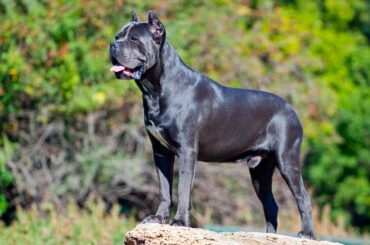The Borzois, also known as the Russian Hunting Sighthound, is a sighthound-type hunting dog from Russia. This was recognized also as Russian Wolfhound until 1936. The Borzoi was created by breeding Arabian sighthounds with a thick-coated breed in 17th century Russia. Crosses of coursing hounds with bearhounds and tall Russian sheepdogs were developed in the fifteenth and sixteenth centuries to increase size and coat, both of which were required for hunting in the cold climate.
The first standard was established in a book of Borzoi hunting laws in the 1600s. Perhaps no other breed has ever been the target of such a large-scale hunt. In Russia, there were seven distinct Borzoi subtypes by the 1800s. The Perchino kind is the ancestor of the majority of current Borzoi.

The Perchino kennels were the source of many of the early American imports. Borzoi was frequently given as gifts by the Russian Czar to visiting royalty. Just after Revolutionary War, the nobility’s days were numbered, and the breed started to dwindle. Foreign nobility who was gifted Borzoi and a few remaining Borzoi kennels were left to decide the breed’s status.
The Borzoi quickly developed a reputation as the greatest glamour dog in America. During the Soviet era, Borzois exports to foreign countries were extremely rare. However, by the late 19th century, enough dogs had been imported to England, Scandinavia, Western Europe, and America to establish the breed outside of its native nation.
A Soviet soldier called Constantin Esmont kept meticulous records of the numerous species of Borzoi he encountered in Cossack settlements in the late 1940s. Esmont was afraid that without a controlled breeding system, the many types of borzaya would degenerate. He persuaded the Soviet authorities that Borzois were a vital asset to hunters who supported the fur industry, and their breeding became legally regulated as a result.
Table of Contents
Physical Appearance
Borzois are huge sighthounds of Russian that have a Central Asian appearance. The Borzoi is a dog with strong jaws that can sprint in extremely cold temperatures. Its neck should be embroidered, and its hindquarters and tail should be feathered. The weight is around 60-105Ib while the height is between 28-30”. This breed has the appearance of a greyhound and runs at a high pace, but it is larger and stronger.

Borzois come in a wide range of colors. Borzoi coats are silky and flat, and they are frequently wavy or slightly curled. The lengthy top-coat is flat and wavy, with different degrees of curling. In the winter or in cold climes, the soft undercoat increases, but in warmer weather, it is shed to avoid overheating. The Borzoi coat is distinctive in terms of texture and distribution across the body.
Behavior
The Borzoi is a breed of dog that is active and independent, with a calm demeanor. Borzois are discriminating pups who become bored with repeated, seemingly meaningless activities fast, and when not adequately motivated, they are very stubborn. They are self-sufficient but quite sensitive. However they are generally fine with kids, they might not even be active enough for some of them. Some people are fearful. When it comes to strangers, they are reserved.

Training and Caring
Borzois can certainly enjoy and do well in professional etiquette and speed events if they have the proper training. The Borzoi requires the opportunity to exercise on a daily basis. A long walk can meet most of their demands, but it should be supplemented with a sprint in a big, safe area. The coat, which is fuller on males, requires brushing or combining two or three times a week, and it sheds a lot at times.
Health
The most prevalent major health problems in borzoi are stomach torsion, cardiomyopathy, hypothyroidism, and bloat. This is also seen in other deep-chested breeds, and their life expectancy ranges from 11 to 14 years.




